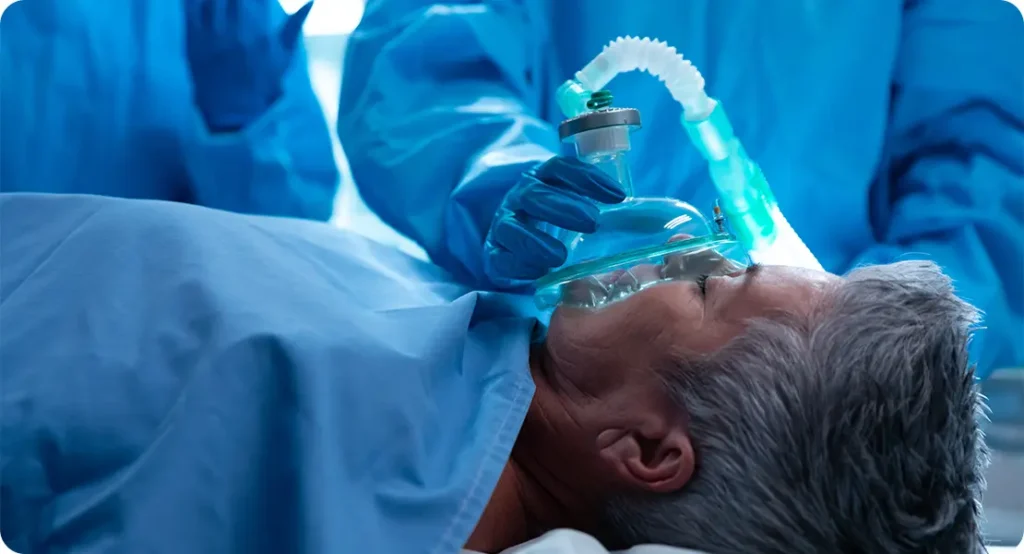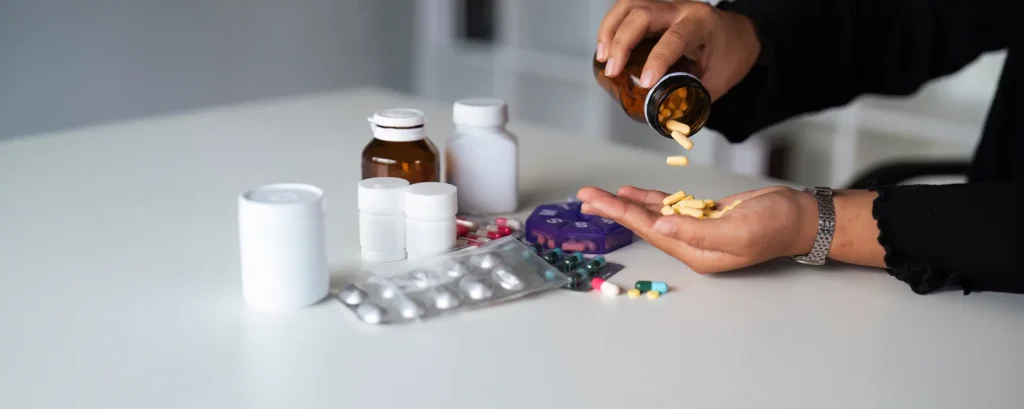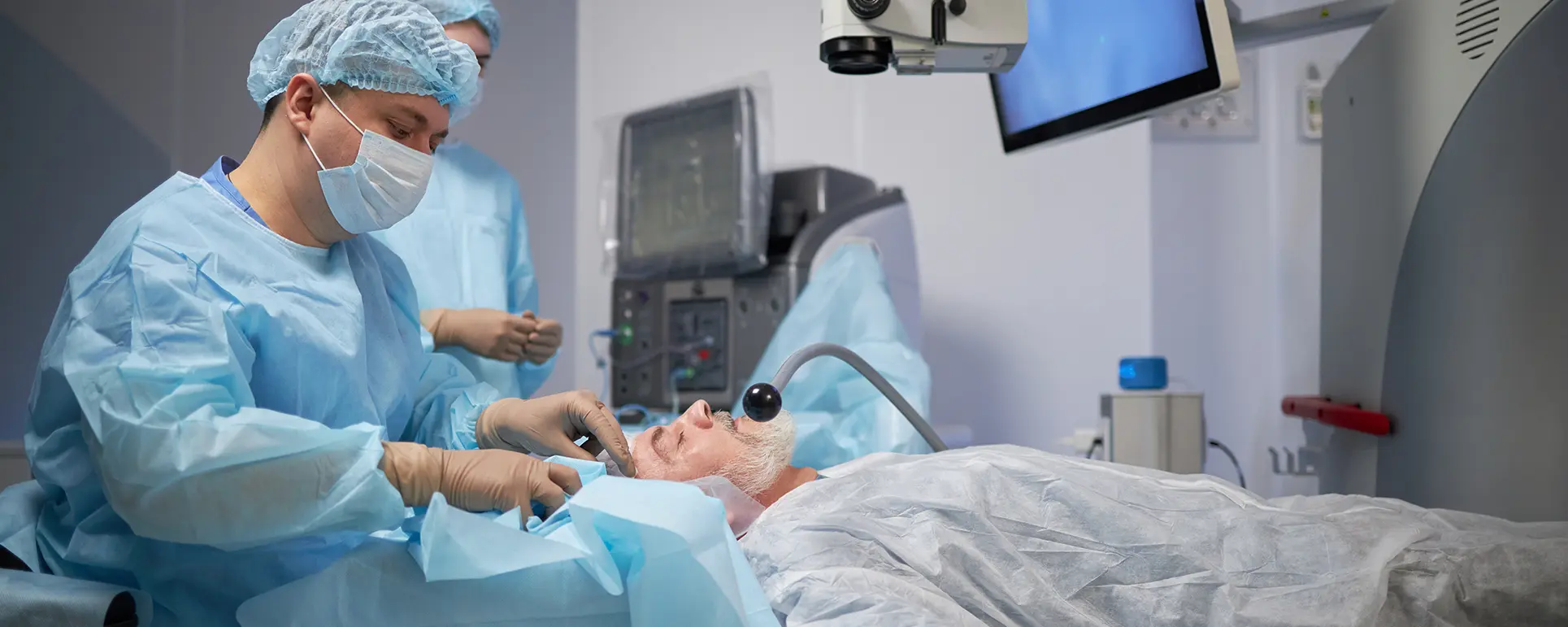Cataract surgery is one of the most commonly performed procedures worldwide, and it generally has a high success rate. But when you have liver disease, things become more nuanced. Whether it’s hepatitis B or C, cirrhosis, or even non-alcoholic fatty liver disease (NAFLD), the way your body processes medications and handles clotting can significantly impact how your cataract surgery is planned.
So, if you’re living with any form of liver disease and you’ve been told you have a cataract, you might understandably have a lot of questions. The good news is that with the right adjustments, cataract surgery can still go ahead safely. In this article, we’ll walk through everything you need to know—from pre-operative assessments to anaesthesia choices, recovery expectations, and how your liver health influences each step.
Understanding Liver Disease and Eye Surgery
Your liver plays a vital role in metabolising medications, producing proteins (like those needed for blood clotting), and managing your body’s immune and detox systems. When your liver is impaired, as with chronic hepatitis or cirrhosis, several issues can arise:
- Reduced ability to clear anaesthetics and other drugs
- Tendency to bleed more easily due to impaired clotting
- Increased risk of infection or delayed healing
Cataract surgery may be minimally invasive, but that doesn’t mean these factors can be ignored. Surgeons must account for them to ensure your safety.
Preoperative Planning: Why It’s Crucial
The first thing your ophthalmologist and anaesthetic team will focus on is a comprehensive preoperative assessment. This will include:
- Liver function tests (LFTs) to check enzyme levels, albumin, and bilirubin
- Coagulation profile including PT/INR and platelet count
- Full medical history, including hepatitis status and medications
- Cardiovascular evaluation if liver disease is advanced
Depending on the results, your procedure may be delayed for optimisation. For example, if your INR is too high (indicating poor clotting), a haematologist may be brought in to help correct this before surgery.
The Role of Anaesthesia: Local vs General

Most cataract surgeries are done using local anaesthesia, often via topical drops or a small injection around the eye. This is a major advantage for people with liver disease, since it avoids putting unnecessary strain on the liver by metabolising stronger sedatives or general anaesthetics.
In rare cases, if general anaesthesia is required (such as in uncooperative patients or those with movement disorders), your anaesthetist will select agents that are safer for compromised livers, like remifentanil or isoflurane. They will also carefully monitor your vital signs and drug metabolism during the procedure.
Managing Blood Clotting Challenges
Liver disease often interferes with normal clotting due to reduced production of clotting factors and a lower platelet count. While cataract surgery doesn’t typically involve significant bleeding, even minor haemorrhages in the eye can affect vision recovery.
This is why your surgeon will request blood tests before the operation. If needed, you may receive clotting factor replacements, vitamin K, or even a platelet transfusion just before the procedure. Your team will also avoid medications that could worsen bleeding, like aspirin or NSAIDs, unless absolutely necessary.
Infections and Healing: Taking Extra Precaution
The immune system may be compromised in chronic liver disease, particularly in cirrhosis. This makes infection prevention a top priority. Your surgical team may take the following precautions:
- Using povidone-iodine antiseptic before incision
- Prescribing pre- and post-operative antibiotic eye drops
- Advising you on strict hygiene and hand-washing
You may also be monitored more closely after surgery to spot any signs of infection or delayed wound healing.
Fatty Liver Disease: A Growing Concern
Non-alcoholic fatty liver disease (NAFLD) is now one of the most common liver conditions globally, especially in people with type 2 diabetes or obesity. Although NAFLD is often less severe than hepatitis or cirrhosis, it still impacts liver enzyme levels and inflammation.
During your assessment, your team will consider NAFLD in the context of metabolic syndrome, which can include high blood pressure, insulin resistance, and cardiovascular issues—all of which may also influence surgical outcomes. The goal will be to stabilise these conditions as much as possible beforehand.
Ongoing Medications: What to Adjust

If you’re on antiviral medication for hepatitis, diuretics for ascites, or anticoagulants for clotting disorders, your medications may need to be adjusted. Your ophthalmologist and hepatologist (or GP) will usually coordinate this.
Some drugs may need to be paused temporarily, especially if they increase bleeding risk. Others may be safe to continue. It’s vital not to stop or change any medication without medical guidance.
The Importance of Multidisciplinary Coordination
When you’re living with liver disease, cataract surgery is rarely managed by a single clinician. Instead, it becomes a collaborative effort between your ophthalmologist, hepatologist, anaesthetist, GP, and sometimes even a haematologist or cardiologist. Each specialist brings vital insight into how your body may respond to surgery, medications, and recovery. This multidisciplinary coordination ensures that no detail is missed — whether it’s adjusting anticoagulation, managing fluid retention, or accounting for any encephalopathy-related risks.
This kind of team-based approach is especially important if your liver disease is advanced or you have complications like ascites, portal hypertension, or previous episodes of bleeding. Your ophthalmologist might delay surgery until your liver specialist confirms stability or recommends specific pre-op interventions. Even your pharmacist might play a role in checking for drug interactions with post-operative eye drops. When all parts of the team are aligned, the risks associated with liver disease can be significantly reduced, allowing for a much smoother and safer surgical journey.
Day of Surgery: What to Expect
On the day itself, the experience will be fairly similar to any standard cataract procedure. You’ll check in, undergo basic checks, and be taken to the theatre. Because your team will already have planned around your liver condition, the surgery itself should proceed without issue.
You may be given IV fluids or medication to support your blood pressure or correct any deficiencies. After the operation, you’ll be observed more closely in recovery before being discharged.
Recovery and Aftercare

Recovery from cataract surgery is usually straightforward, and this should still be the case if you have liver disease—provided everything was well managed. You’ll need to:
- Use prescribed antibiotic and anti-inflammatory drops
- Avoid rubbing your eyes
- Stick to hygiene precautions
- Attend all follow-up appointments
Depending on your liver health, you may be asked to come in slightly more often than other patients to ensure you’re healing properly and not developing any complications.
Long-Term Vision Outcomes
There is no evidence to suggest that people with liver disease have worse long-term outcomes from cataract surgery if proper precautions are taken. In fact, regaining clear vision can improve your overall quality of life, mobility, and even mental wellbeing—especially if your condition has made you feel limited.
As long as you’re engaged in your follow-up care and continue managing your liver condition, your new lens implant should perform just as well as in any other patient.
FAQ: Cataract Surgery and Liver Disease
- Can I have cataract surgery if I have cirrhosis?
Yes, you absolutely can, but the approach needs to be carefully planned. Cirrhosis can interfere with your body’s ability to clot properly and metabolise medications, so your surgical team will carry out extra preoperative assessments to minimise risks. This may involve working with a hepatologist or haematologist to get your liver function and clotting factors as stable as possible before surgery. If the cirrhosis is well-compensated and you’re otherwise healthy, cataract surgery can still be performed safely and effectively. - Will I need a general anaesthetic?
In most cases, no. Cataract surgery is typically done using local anaesthesia, such as eye drops or a small injection around the eye. This is particularly beneficial if you have liver disease, as it avoids the need for systemic drugs that your liver would otherwise need to process. Only in very rare cases—such as if you are unable to stay still or have a complex medical condition—would general anaesthesia be considered, and even then, it would be tailored to your liver function. - Do I need to stop any medications before the surgery?
It depends on what medications you’re taking. Drugs that affect blood clotting—such as warfarin or aspirin—may need to be paused temporarily before surgery, but only under strict medical guidance. Similarly, some medications used to manage complications of liver disease, like diuretics or antivirals, might require adjustment. Your ophthalmologist will usually liaise with your liver specialist or GP to ensure any changes are made safely and appropriately in advance of your procedure. - How is bleeding risk managed during cataract surgery?
Even though cataract surgery involves minimal bleeding, your team will take no chances if you have a bleeding tendency due to liver disease. They’ll check your platelet count and clotting profile beforehand, and in some cases, may recommend preoperative treatments like vitamin K, fresh frozen plasma, or platelet transfusions. The goal is to ensure that even minor bleeding is unlikely, and any potential risk is addressed before you enter the operating theatre. - Will liver disease affect how I heal after the operation?
Liver disease can affect the immune system and protein production, both of which are important for wound healing. If your liver condition is advanced, you might heal more slowly or be at slightly higher risk of infection. That said, the eye generally heals quickly after cataract surgery, and with close monitoring and adherence to your post-op care plan—including antibiotics and follow-ups—you can still expect a smooth recovery in most cases. - What if I have hepatitis B or C?
Having hepatitis B or C doesn’t exclude you from cataract surgery, but it does mean your liver function and viral load will be assessed beforehand. If your hepatitis is well-managed, the surgery usually goes ahead with routine precautions. Your surgical team may also take steps to avoid drug interactions with any antivirals you’re taking and ensure that infection prevention measures are particularly thorough both during and after the procedure. - Is fatty liver disease a concern for cataract surgery?
Non-alcoholic fatty liver disease (NAFLD) is increasingly common and is often linked to obesity, diabetes, and high blood pressure—all of which can impact surgical outcomes. While NAFLD itself might not severely affect your surgery, it’s the associated conditions that your team will consider. They’ll assess your overall cardiovascular health, blood sugar control, and liver enzymes to ensure you’re in the best possible shape before undergoing cataract removal. - Can I go home the same day after surgery?
Yes, most patients with liver disease can still return home the same day after cataract surgery, just like other patients. However, your team may keep you in the recovery area for a bit longer to ensure your vital signs are stable and you’re responding well to any medications used. If your liver disease is severe, or you needed additional intraoperative support, they might recommend someone accompany you home and stay with you overnight just to be cautious. - Are there long-term risks to my eyes because of liver disease?
Generally, liver disease does not cause long-term eye damage following cataract surgery if it’s managed properly. Your new lens implant should function well, and your vision should improve significantly. That said, if your liver disease progresses or causes complications like chronic inflammation, dry eyes, or poor healing, your ophthalmologist may want to keep a closer eye on you through more regular follow-ups. But these are precautions rather than expectations. - Should I be worried about anaesthesia and liver damage?
It’s a reasonable concern, but the risk is usually very low, especially with local anaesthesia. If general anaesthesia is needed, the anaesthetist will choose drugs that are safer for people with liver impairment—many of which are metabolised differently or have shorter half-lives. The team will also adjust the dosage and monitor you closely throughout the procedure. In nearly all cases, anaesthesia can be safely administered with proper planning.
Final Thoughts
Having liver disease doesn’t mean you have to miss out on the benefits of cataract surgery. With careful planning, close collaboration between your ophthalmologist, anaesthetist, and liver specialist, and a bit of extra attention to detail, your surgery can be just as safe and successful as anyone else’s.
If you’re looking for experienced care tailored to complex medical conditions, the London Cataract Centre has a strong track record of safe outcomes and comprehensive preoperative planning. Don’t let your liver condition hold you back from clearer vision—there’s a team ready to help.
References
- Del Olmo, J.A., Serra, M.A., Rodríguez, F. and Escudero, A. (2023) Perioperative management of patients with liver disease: assessment and outcomes in cirrhosis. Medscape.
Available at: https://emedicine.medscape.com/article/284667-overview - Premkumar, M. et al. (2023) Managing Coagulation and Bleeding Risk in Patients with Cirrhosis. Diagnostics, 14(22), p.2602.
Available at: https://www.mdpi.com/2075-4418/14/22/2602 - Chen, Y., Jiang, X., Song, Z. and Wang, W. (2024) Associations of severe liver diseases with cataract: a cohort study using UK Biobank data. Frontiers in Public Health, 12, 10831806.
Available at: https://www.ncbi.nlm.nih.gov/pmc/articles/PMC10831806/ - Ng, J.Q., Keay, L. and O’Day, J. (2019) Anaesthetic considerations for cataract surgery in patients with systemic disease. Anaesthesia and Intensive Care, 47(1), pp.46–54.
Available at: https://journals.sagepub.com/doi/10.1177/0310057X19891737

